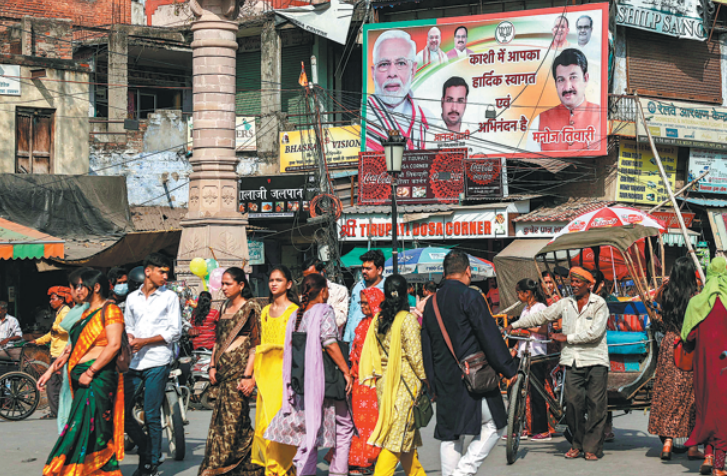India goes to polls in April as Modi seeks third term
By APARAJIT CHAKRABORTY in New Delhi | China Daily Global | Updated: 2024-03-18 09:17

India will hold a multiphase general election from April 19 to June 1, with most poll analysts predicting a victory for Prime Minister Narendra Modi for the third consecutive term.
The Election Commission of India — the country's independent poll-conducting body — announced the dates for the 2024 general election on Saturday.
More than 970 million voters will elect 543 members for the lower house of the country's parliament for a five-year term. The results will be announced on June 4, Chief Election Commissioner Rajiv Kumar told a news conference in the capital New Delhi on Saturday.
"Indians will together express their will once again," Kumar said. Elections will be conducted in seven phases, with different states voting at various times.
A model code of conduct also came into effect. Campaign rules now apply, and no political party or leader in the country, including Modi's government, is allowed to announce new policies or welfare measures that could influence voters.
People will cast their votes through 5.5 million electronic voting machines. There will be more than a million polling stations. The Election Commission will deploy about 15 million polling staff and security personnel to conduct the elections.
"It should have been shortened and it is longer in comparison to 2019. Conducting elections during the hottest months of the year may affect the voter turnout," said Balveer Arora, the chairman of the Centre for Multilevel Federalism, New Delhi, and a former professor of political science at the Centre for Political Studies, Jawaharlal Nehru University, New Delhi.
May and June are India's hottest months.
Another reason for the multiphase election is the deployment of huge federal security forces, which is necessary to ensure a free and fair poll, experts said.
"I have full confidence that we will get the full affection and blessings", Modi, seeking a third straight term this time, said in a series of posts on X.
India has a parliamentary system of governance. The party that wins the majority of the 543 seats in the lower house of the parliament forms the government and selects one of its nominees to be prime minister.
Modi's Bharatiya Janata Party won more than 303 seats in 2019. It is running with a ruling alliance, the National Democratic Alliance.
The Indian National Congress, the main opposition party, managed to win just 52 seats, and other regional parties won 98 seats. The party is leading a coalition of 20 opposition parties this time.
Yet, Modi and his party remain the most popular, said Amit Rajendra Dholakia, a professor of the Department of Political Science at the Maharaja Sayajirao University of Baroda.
Heavy campaigning
The 73-year-old Modi has been campaigning aggressively throughout the country, addressing public and private meetings, and inaugurating new projects almost daily before the election dates were announced.
To appeal to a wide range of voters, Modi has been highlighting India's economic progress in his speeches, stating that the country is currently the fastest-growing major economy in the world in addition to investments made in infrastructure and welfare programs for the poor.
In January, Modi presided, though controversially, over the inauguration of a grand temple in Ayodhya, in north India, which political analysts predicted that the BJP will try to consolidate Hindu vote banks in a country where 80 percent of the population is Hindu.
A survey conducted by the Pew Research Centre last year revealed that nearly eight in 10 Indians have a favorable view of the current prime minister.
The writer is a freelance journalist for China Daily.
























